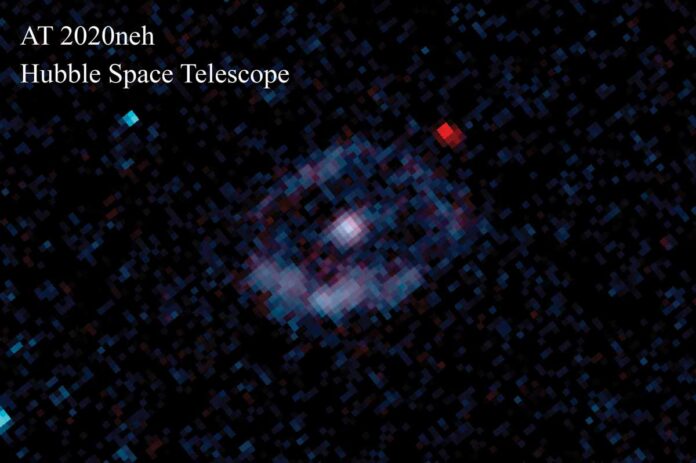Massive black holes (BHs) are common at the centres of massive galaxies. Their population in dwarf galaxies, however, remains a mystery. Detecting light emitted by accreting gaseous discs close to black holes has traditionally been used to identify these systems. They are difficult to detect in the absence of this light.
An international team led by scientists from the University of California, Santa Cruz, the Niels Bohr Institute at the University of Copenhagen, and Washington State University discovered an intermediate-mass black hole lurking in a dwarf galaxy. The black hole was discovered when it devoured an unlucky star that got too close.
The Young Supernova Experiment (YSE) was used to capture the flare. It is a survey designed to detect cosmic explosions and transient astrophysical events.
Tidal disruption events are a direct way to probe massive black holes. These are the luminous flares produced when a star wanders too close to a black hole and is shredded. The rise times of these flares are thought to be related to the mass of the black hole.
Astronomers presented AT 2020neh, a fast-rising tidal disruption event candidate hosted by a dwarf galaxy, in this study.
“This discovery has created widespread excitement. Because we can use tidal disruption events not only to find more intermediate-mass black holes in quiet dwarf galaxies but also to measure their masses,” said coauthor Ryan Foley, an assistant professor of astronomy and astrophysics at UC Santa Cruz.
The team’s findings provide a baseline for future studies of midsize black holes. This is according to first author Charlotte Angus of the Niels Bohr Institute,
“The fact that we were able to capture this midsize black hole while it devoured a star provided us with an extraordinary opportunity to detect what would otherwise have been hidden from us.” Furthermore, we can use the properties of the flare to better understand this elusive group of middle-weight black holes. It may account for the majority of black holes in galaxies’ centres.”
“If we can understand the population of intermediate-mass black holes out there—how many there are and where they are located—we can help determine if our theories of supermassive black hole formation are correct,” said coauthor Enrico Ramirez-Ruiz, professor of astronomy and astrophysics at UCSC, and Niels Bohr, Professor at the University of Copenhagen.

